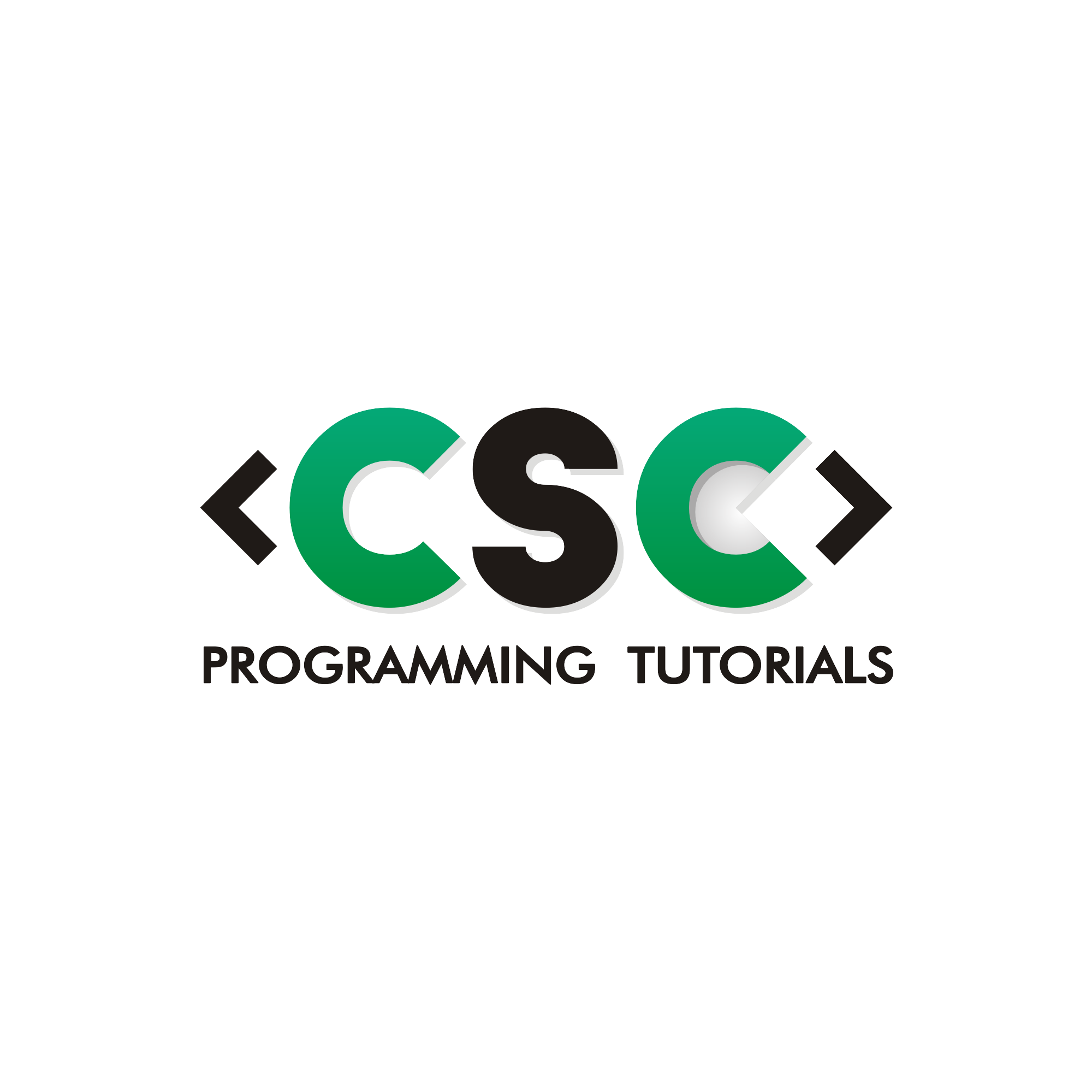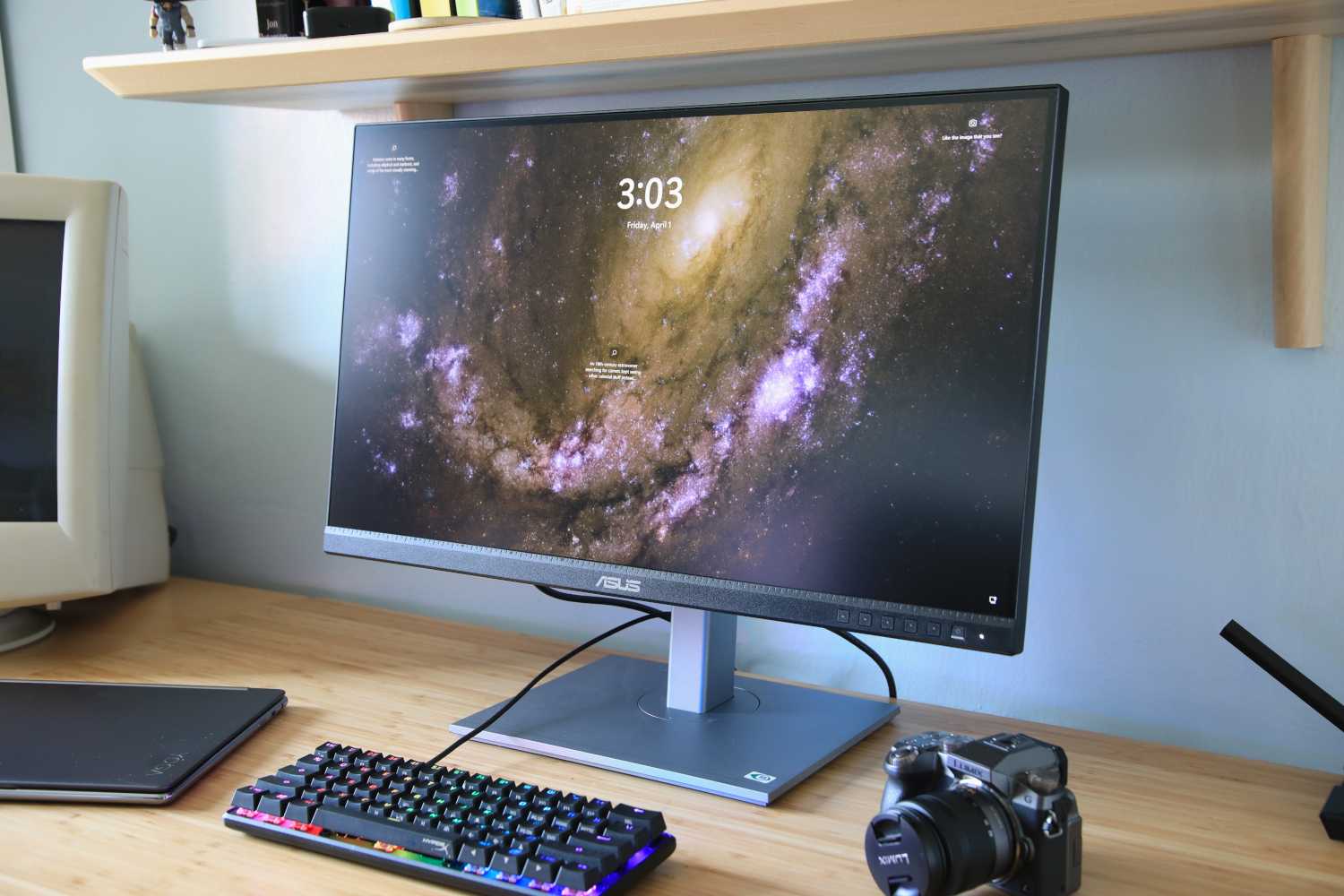Programming is possible on nearly any monitor, but most programmers prefer a big, pixel-dense, attractive screen that can render tiny code with clarity and display numerous windows at once. Prolific multi-taskers, many programmers also go all-in on multiple displays and use two or three monitors at once.
This guide will help you find a great monitor that can handle all the above—and at a reasonable price.
For even more monitor recommendations, check out our roundup of the best monitors across all categories.
1. Asus ProArt PA348CGV – Best monitor overall for programming
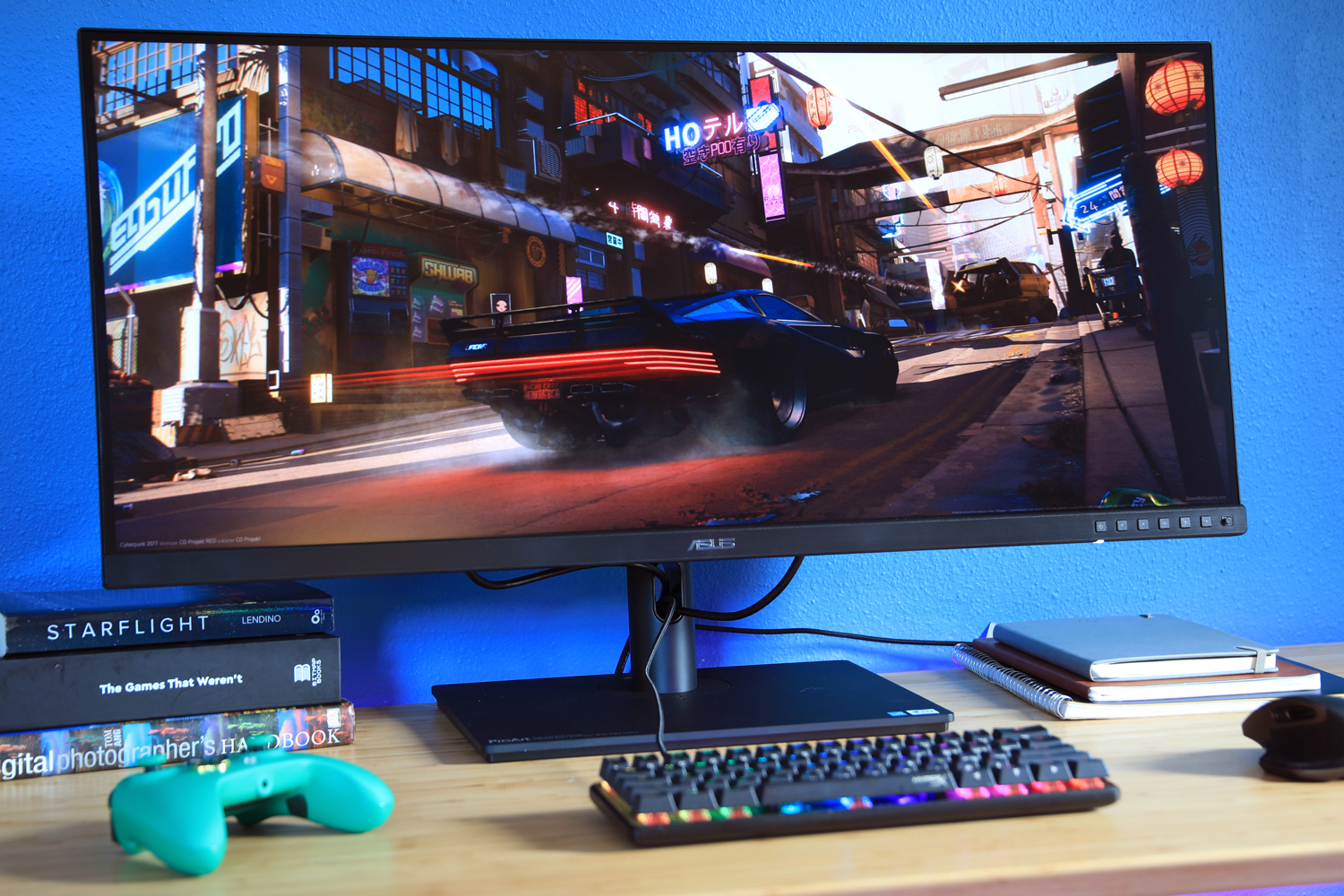
Pros
- Excellent SDR image quality
- Sturdy, hefty design
- Wide range of customization
- 120Hz refresh rate
Cons
- USB-C hub lacks video-out or ethernet
- HDR is merely passable
The Asus ProArt PG348CGV is an excellent monitor for programming—and many other tasks.
This is a 34-inch ultrawide monitor with a resolution of 3440×1440, which provides plenty of display space and pixel density for viewing multiple windows or large amounts of code. It also has a USB-C port with DisplayPort Alternate Mode and 90 watts of Power Delivery. That’s great for easily docking a USB-C-compatible laptop.
Though ideal for programming, the ProArt PG348CGV excels in any task thrown at it. It has accurate color and a wide color gamut, so it’s great for photo, video, and graphics editing. The monitor also has a 120Hz refresh rate and supports AMD FreeSync Premium Pro, which makes it a solid choice for gaming.
Its price seals the deal. Available for $749.99, the ProArt PG348CGV is less expensive than similar competitors. In fact, it overdelivers compared to most alternatives: Many ultrawide monitors offer similar image quality, a high refresh rate, or USB-C, but very few offer all three.
2. Dell U3223QE – Best 4K monitor for programming
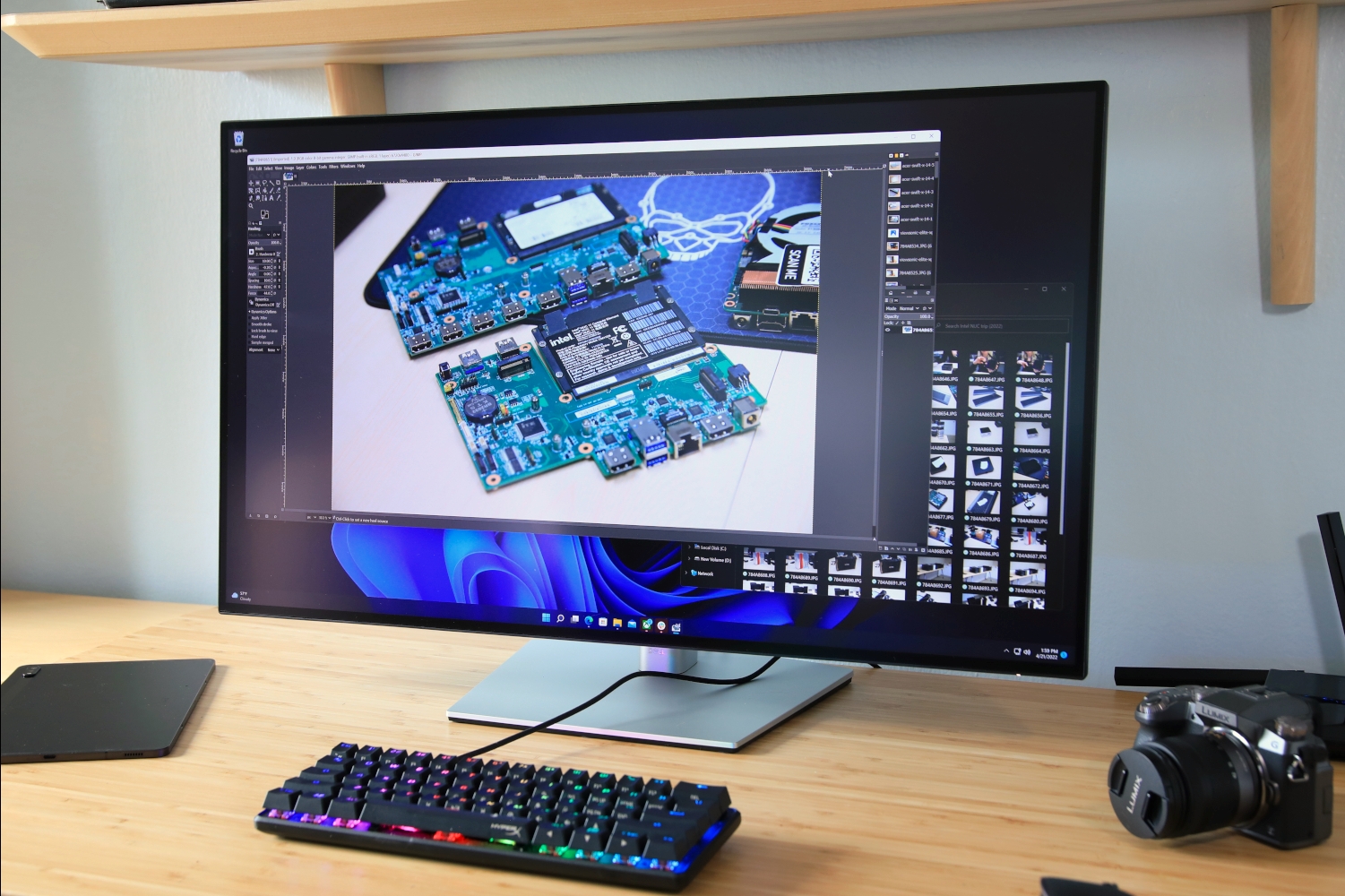
Pros
- IPS Black panel fulfills its promise
- Accurate color with wide gamut
- High brightness in SDR
- USB-C hub with 90 watts of power
Cons
- Edges of display are noticeably bright
- HDR performance disappoints
- Only a 60Hz panel
If you want a standard widescreen monitor for programming, or prefer the pixel density of 4K resolution, the Dell U3223QE is a great choice.
The U3223QE is a 32-inch widescreen monitor with 4K resolution. It offers a large, pixel-dense display that’s great for using four windows in a grid arrangement. The monitor’s high pixel density and strong brightness make code easy to read even when individual windows are small.
Its size and resolution are supported by excellent image quality. This is among the few monitors with an IPS Black panel, which roughly doubles the contrast ratio of a standard IPS panel. The result is a richer, more pleasant image. It also has excellent color accuracy, so it’s great for photo, video, and graphics editing.
The U3223QE is also among the best USB-C monitors available. When connected over USB-C it acts as a feature-rich USB-C hub with multiple USB-A ports, ethernet, audio-out, and DisplayPort-out. It’s perfect for programmers who need to dock a laptop over USB-C.
Need a slightly smaller monitor? Dell also offers the U2723QE, which packs similar features into a 27-inch from factor.
3. Asus ProArt PA279CV – Best mid-range monitor for programming
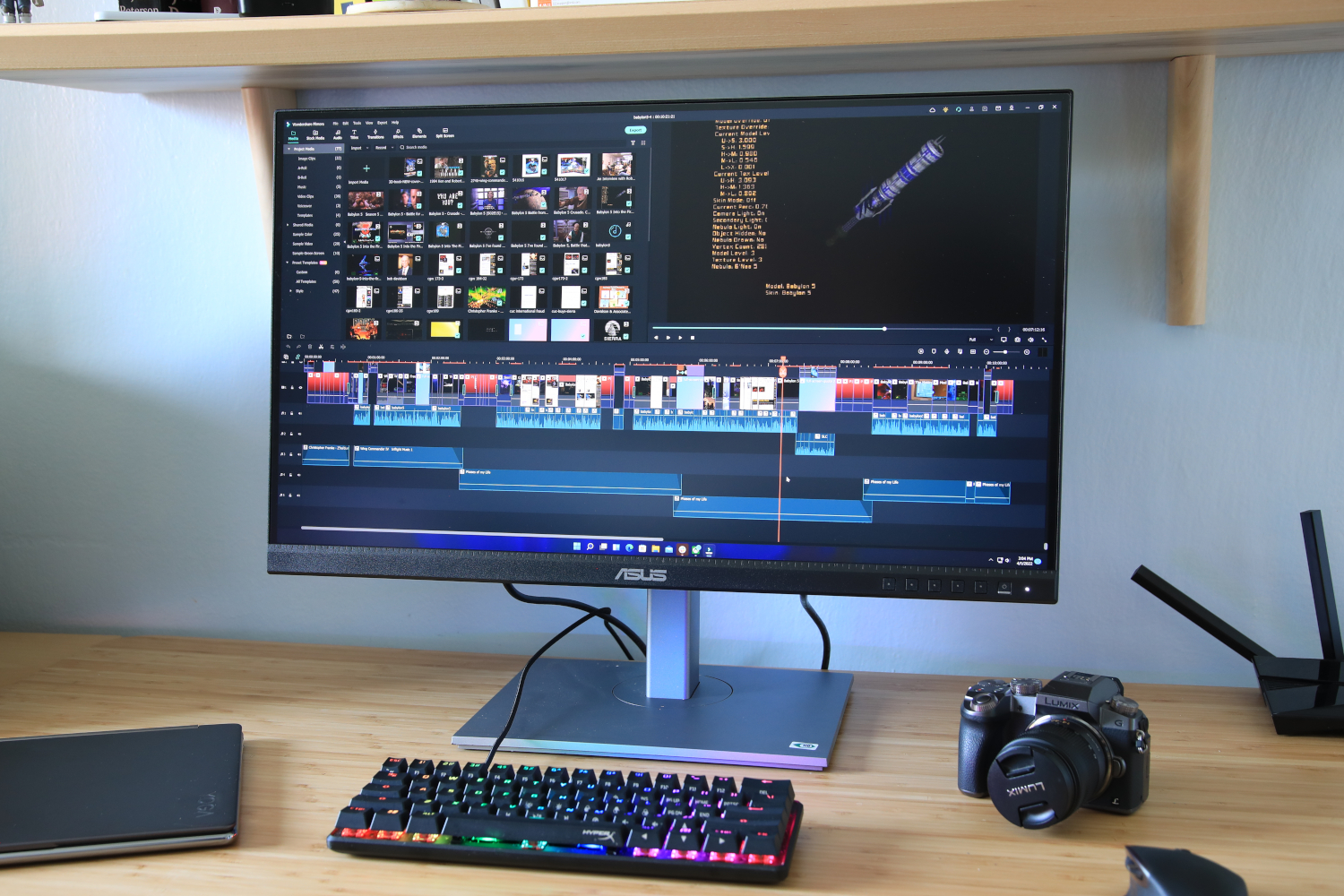
Pros
- Accurate image
- High maximum brightness
- Menu settings allow calibration
- Has USB-C with 65 watts Power Delivery
- Competitive price
Cons
- Unimpressive design
- Luminance uniformity could be better
- HDR is bright but otherwise falls short
The Asus ProArt PA279CV is an affordable way to snag the benefits of high-end monitors with few sacrifices.
This monitor is a 27-inch widescreen with 4K resolution, offering a reasonably sized and pixel-dense space for viewing multiple windows at once. Its pixel density, which works out to 163 pixels per inch, is as high as you’ll find without upgrading to a more extravagant (and much more expensive) option such as a 5K or 8K display. Image quality is excellent, too, with top-notch color accuracy.
This is a USB-C monitor with 65 watts of Power Delivery and four USB-A ports. Its Power Delivery won’t be enough for high-end laptops but remains adequate for more portable machines, and its USB-A port selection is great for the price.
And what, exactly, is the price? The ProArt PA279CV usually retails for $449.99. That’s a sweet deal for the features and quality it offers.
4. AOC CU34G2X – Best budget monitor for programming
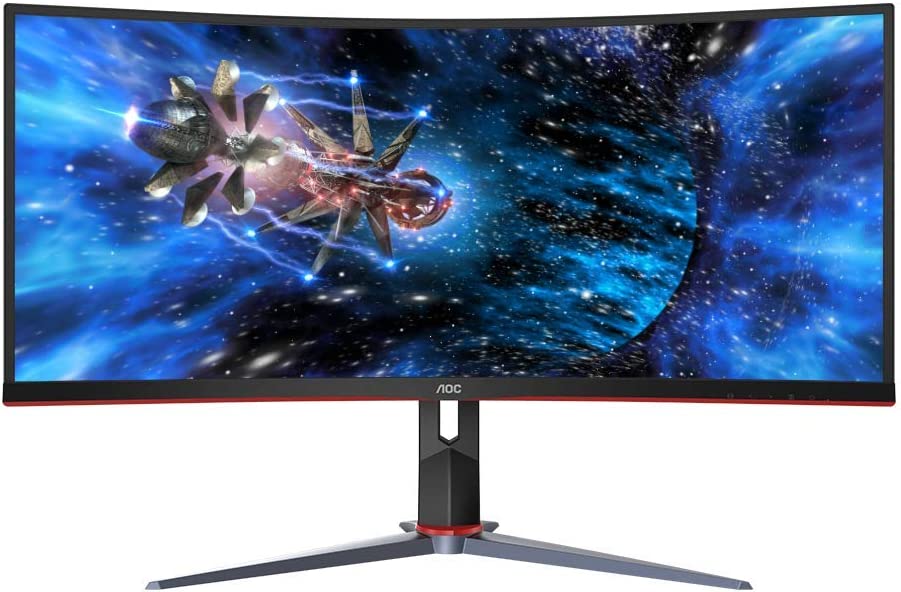
Pros
- Good performance
- Curved monitor
- Special gaming settings
- Quite inexpensive
Cons
- No height adjustability
- Only medium brightness
- High power consumption
Need a monitor that’s ideal for programming on a tight budget? The AOC CU34G2X has you covered.
The AOC CU34G2X is a 34-inch curved ultrawide monitor with a resolution of 3440×1440. Its size and resolution are the same as our top pick, the Asus ProArt PA348CGV, so it’s just as useful for programming and multi-tasking.
This monitor uses a VA panel that provides an advantage in contrast ratio and black levels. Its color accuracy and color gamut, though not as good as more expensive alternatives, are more than acceptable in day-to-day use. This monitor supports a 144Hz refresh rate and adaptive sync, making it a solid choice for gaming after the workday is done.
Priced at $399.99 (and often available for less), the CU34G2X is more affordable than most alternatives. This does result in a few sacrifices. It’s not especially bright, so it’s best used in a room with some light control. It also lacks the wide color gamut and great color accuracy found in the ProArt PA348CGV. With that said, its overall image quality is solid and won’t distract from programming.
5. LG DualUp 28MQ780-B – Best second monitor for programming
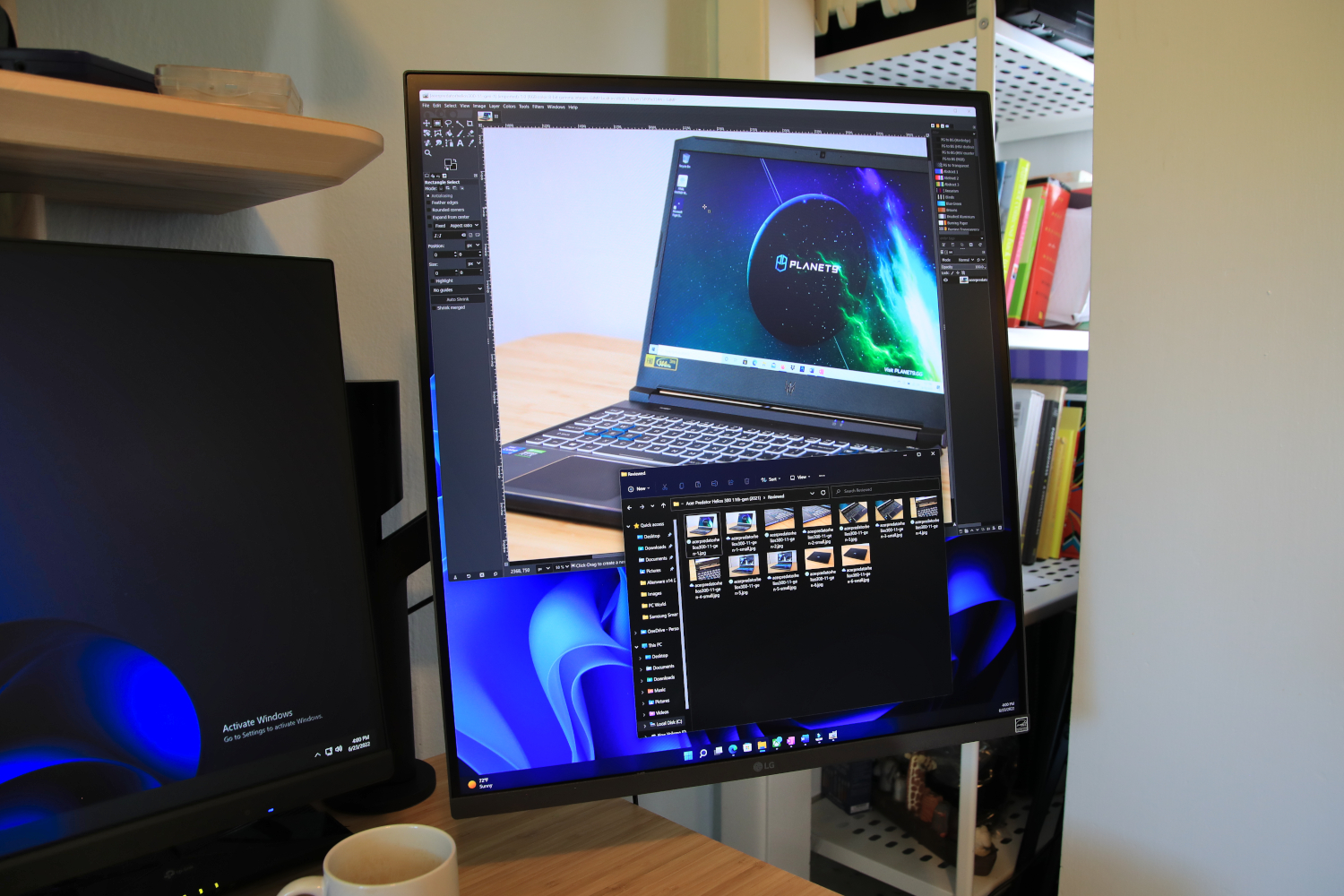
Pros
- Unique aspect ratio is useful for photo, video editing
- Makes an awesome second monitor
- Highly adjustable stand
- Vivid, accurate color
Cons
- Difficult to fit in a small home office
- USB-C port offers limited downstream connectivity
- Can lack immersion in some content
Programmers often want to use a second monitor—not just for viewing code, but also for managing the wide variety of extra programs (like Slack or Monday) that programmers must use to keep organized and connected. The LG DualUp 28MQ780-B is uniquely suited for this task.
The DualUp 28MQ780-B is a 28-inch monitor with an unusual 16:18 aspect ratio that’s a bit taller than it is wide. It can also rotate 90 degrees, if you’d prefer, to become a bit wider than it is tall. Either way, the monitor is close to square and about as tall as a 32-inch monitor. It also ships with a monitor arm, instead of a desktop stand, which is handy for positioning the monitor next to another display.
Programmers will be pleased with the monitor’s 2560×2880 resolution, which is higher than a 1440p monitor but slightly less than a 4K monitor. The monitor has great image quality with high color accuracy and a wide color gamut. It’s a USB-C monitor, too, providing up to 90 watts of Power Delivery for charging a connected laptop.
What to look for in a monitor for programming
Programming doesn’t require a specific type of monitor. Most programmers could be productive on a simple 1080p, 24-inch display. However, there are several features that most programmers will find desirable.
Bump up the size
A larger monitor is often better for programming than a smaller one. This includes ultrawide monitors. A larger monitor effectively increases the size of everything on-screen, which in turn can make it easier to see. We think a 27-inch widescreen monitor is a comfortable minimum size to aim for, and all the monitors on this list are at least that large.
There are limits to size, though: A 48-inch display can be uncomfortable to use because it will lack pixel density and may require a lot of head and neck movement to see the corners of the screen.
More pixels mean more usable space
Programmers will also find high resolutions more useful than lower resolutions.
A higher resolution provides more useable display space because it increases the number of pixels visible. If comparing a 1080p monitor to a 4K monitor, for example, the 4K monitor can literally display four times as many pixels.
Those pixels will also be easier to view and use because a higher resolution improves sharpness. Programmers will find a high-resolution monitor can maintain clarity in extremely small fonts. That’s great when viewing large chunks of code.
Great connectivity, including USB-C, is useful
A wide range of connectivity, including USB-C, can be useful for programmers. That’s epically true for programmers who use a laptop and frequently dock/undock the laptop throughout the workday.
A USB-C connection can carry video over DisplayPort Alternate Mode and charge a connected laptop with Power Delivery. That makes it a one-cable solution for docking the laptop. Just plug it in and you’re good to go. In many cases, the USB-C monitor will even function as a USB-C hub.
Great image quality is always a plus
Programing doesn’t require a monitor with good, or even modest, image quality. Functionally, most tasks core to programming would work just as well on a 20-year-old LCD as on a modern display.
However, most programmers find themselves working with or viewing various forms of media occasionally, whether it’s image files for UI elements or textures for a game. This is where superior image quality becomes useful. It will help programmers get a better idea of what the result looks like on a typical user’s display.
Work-from-home programmers will prefer great image quality in day-to-day use. Many use the same monitor for both work and entertainment.
Source: PC World
